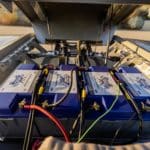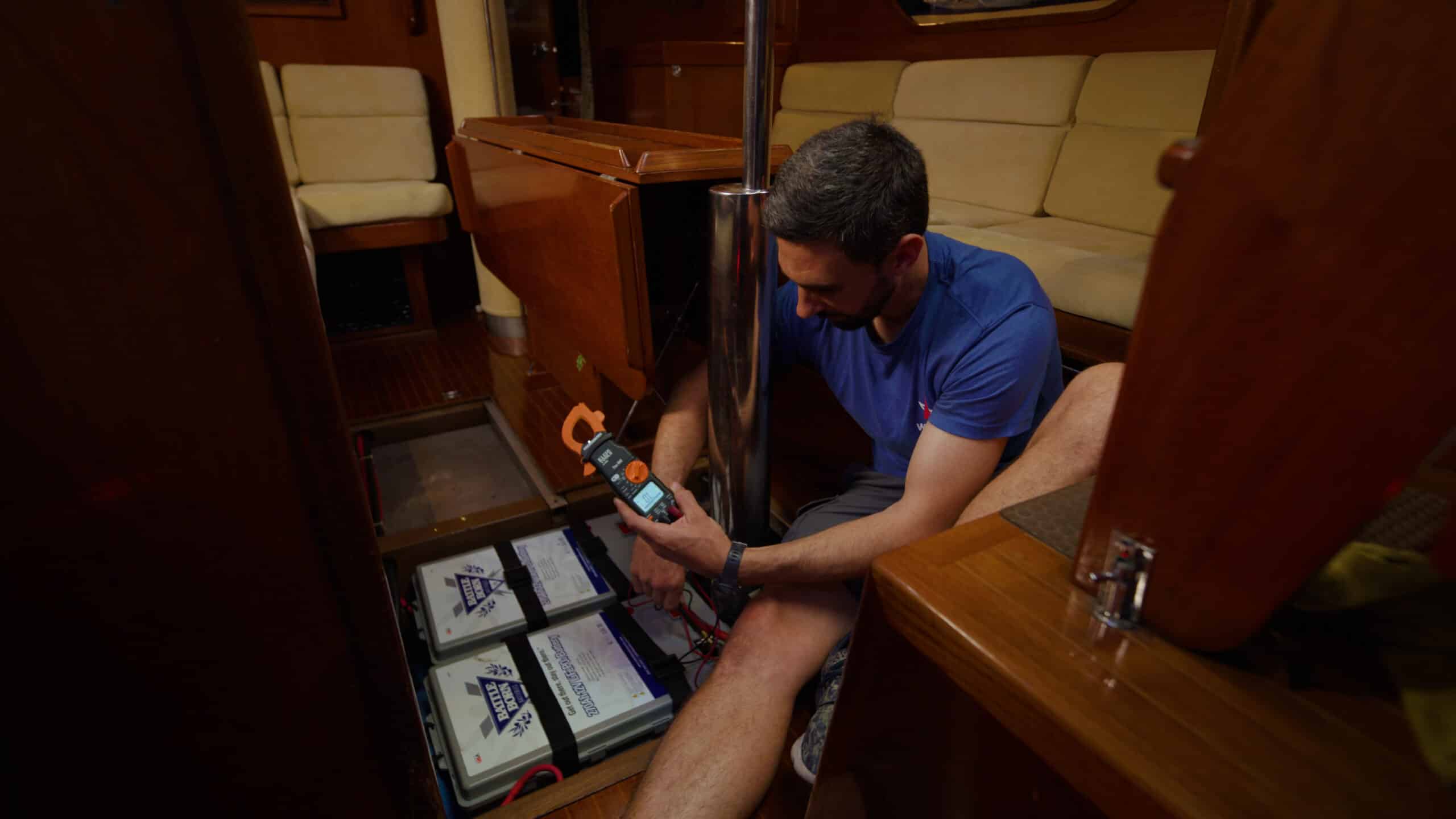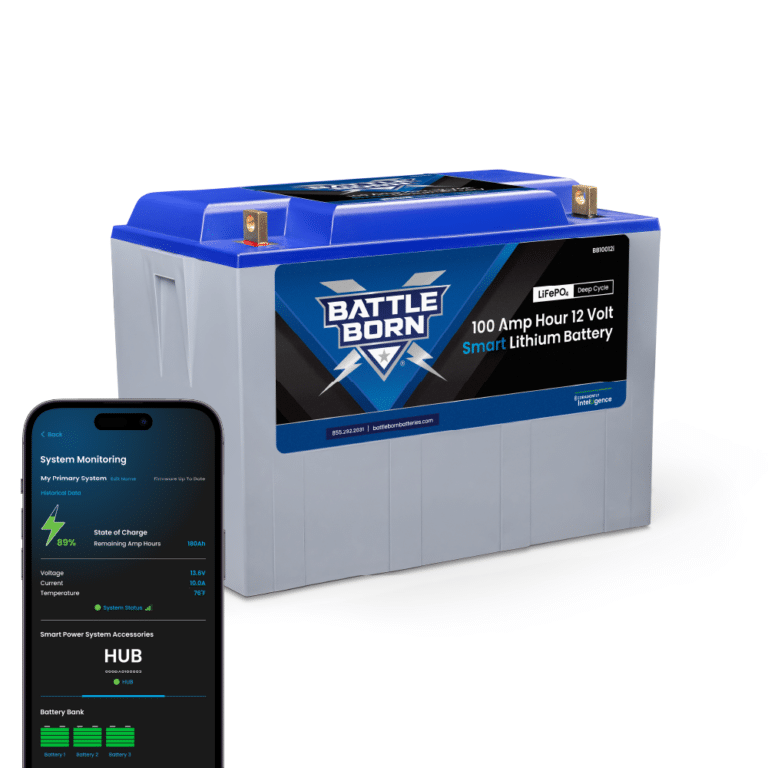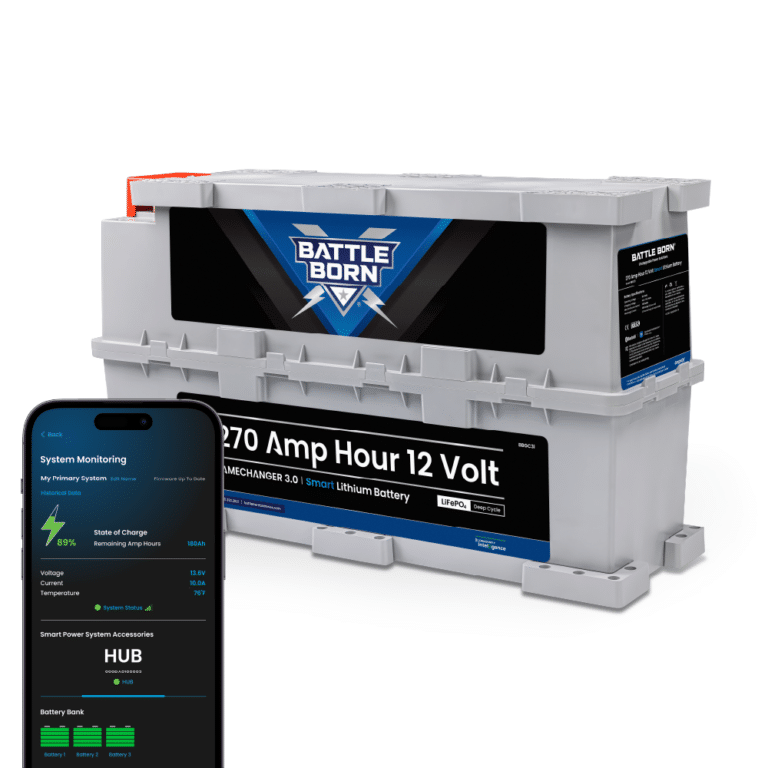
MENUMENU
TALK TO AN EXPERT
Special Hours: 7AM – 6PM PST
TALK TO AN EXPERT
Special Hours: 7AM – 6PM PST
Multimeters are essential tools for anyone with a marine power system. During the installation process, a multimeter can ensure that all connections are clean and each component is functioning properly. Then, during the system’s use, a multimeter is a great tool to have on hand for troubleshooting. A multimeter can find faults in circuit wiring and determine if individual pieces of equipment are faulty.
With your digital multimeter turned on and set to measure voltage, you will have the ability to measure both AC and DC sources. AC voltage could be coming from shore power or your inverter. Measuring these sources can help you determine that everything is working properly. To measure the voltage of your batteries, you will need to measure for DC voltage. Once in DC mode, you can attach the probes of the multimeter to the battery terminals. You will attach the black probe to the negative side of the circuit and the red probe to the positive terminal. The number shown on the screen will represent the number of volts that are in your battery.
By simply setting the dial on your multimeter to the amperage setting, you can measure for both AC and DC amperage. This will tell you how fast electrons are moving through the circuit. Using the amp clamp on your multimeter, you can clamp around any lead wire for any of your components to get an amperage reading. When measuring your alternator output or solar input, you’ll want to set the multimeter to measure AC amperage.
For your batteries, your multimeter should be set to measure DC amperage. Begin by clamping the amp clamp around the positive lead wire of your battery bank. The measurement shown on the screen will represent the amount of amperage going out of your battery. To ensure your battery circuit is functioning properly, you will want to repeat the same steps with the negative lead wire for your battery bank. If the multimeter reads the same amperage coming in and going out of your battery, your circuit is working properly. This process can also be repeated with the other components in your system as well, to ensure they are also in proper working condition.
To test that your system has a complete circuit, the third main function of your multimeter will allow you to test for continuity. If you’re having trouble with a piece of equipment, you can use a continuity test to see if the path to that route is conducting power.
In order to do this, you will begin by setting your device to measure continuity. Then you will take the black and red probe wires and touch them to each part of your circuit. To test continuity between two pieces of equipment, you will touch each of the multimeter probes to the leads of that equipment. If the multimeter beeps, there is continuity between them. You can repeat this process throughout your system to ensure that power is able to run through it properly.

Want to Learn More?
Check out the full Marine 101 series on our YouTube channel or through the Academy page on our website. For further questions or help designing the perfect marine power system, our technical sales team would love to help! You can reach by calling (855) 292-2831 or emailing [email protected].
Shop Best Sellers








Ask a technical specialist now at 855.292.2831
Stay in the Know